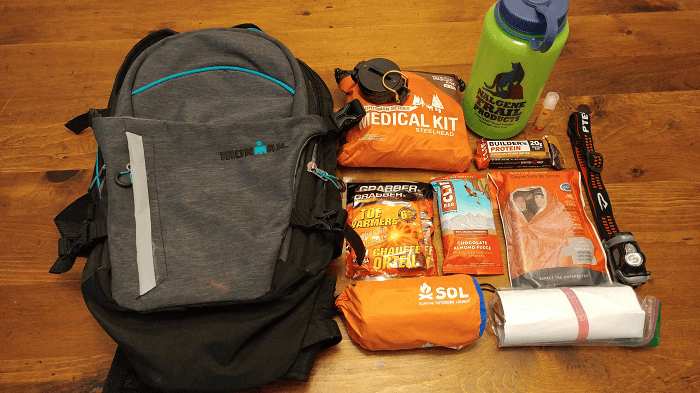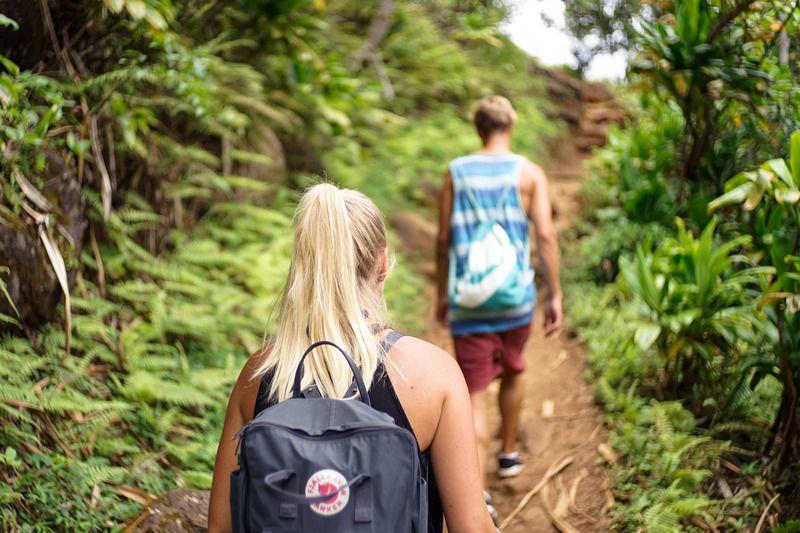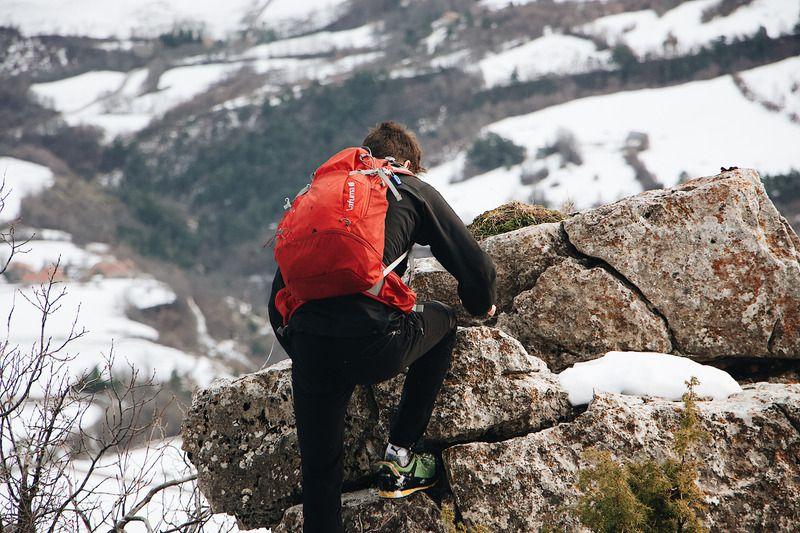Strong Hikers are capable of separating inexperienced soft feet from actual scout considerations. If you are ready to join your troupe and prove yourself, this guide will help you explore nature trails, answer deserving leaves and get merits of mountain climbing and earn you’re the Hiking merit badge.
If you like scouting, swimming, walking, or cycling, most may be the first logo you get. Climbing is one of my first tracks, and it turned out to be completely different than other spy activities I’ve done before.
The rand emblem is not intended for depressed people. But if you plan to climb mountains, you will show that you have a real determination to become a Boy Scout. To receive the Hiking merit badge, you must complete 20 miles and four walks for more than 10 miles. Even most adults lose their minds!
Contents
Preparing for the hiking
- Climbing is not just a walk through the woods. It needs strength and balance. Here are some ways to prepare for the hike, from the day hike to the longest ride in the world. But if you think you can jump off the couch after a long take-off of a boot, and then think again.
- Most routes are uneven and at least have altitudes, so the simplest ascents still need balance and strength to avoid injuries. As hard as you think
How to choose mountain boots and shoes
- No matter how good you fit, your shoes will make you fail in your hiking. More than that, it will protect and support your feet and ankles or not, and you’ll have to cut them three miles and then throw them off the cliff.
- When buying boots and shoes, make sure that your choice fills the appropriate and stylish package: How you use less energy in running shoes.
- You have injured your ankle in the past. Likewise, those ultralight ones don’t need as much support as fillers, sinks; everything Buy your shoes somewhere where you can find someone who knows what to look for. Some boots are designed for specific terrains and even for an advance; therefore, it is worth researching before buying.
Clothes to consider when going for Hiking
Choose clothes made from dry and damp fabrics, such as wool or powder. Avoid cotton fabrics that after a long time dry when wet. Do you think clothing is a separate system? It’s good to know what to carry during hiking.
- The base layer next to the skin: Made of wool or polyester, these are the most important in the cold to cold temperature.
- Swing layers: includes nylon and / or polyester pants, shirts, umbrellas and umbrellas.
- Insulation: Depending on the weather, a lead vest or jacket, a light wool jacket, a hat and warm gloves may be required.
- Rainwear: they must wear a waterproof jacket, regardless of the weather forecast. If you’re expecting humid weather, bring a pair of rain pants.
Start with these essential exercise walking tips.
- If you’ve been training or haven’t exercised for a while, start with basic exercises to warm up your muscles and increase your pace.
- Running or walking on the sand: creates muscles that protect your knees and ankles.
- Create a range of motion: get resistance bands to strengthen your muscles with full stretches. Staying on a tennis ball or balance disc is also good because it creates a small stabilizing muscle around your ankles and knees.
- Crunches: Building your core strength will help you maintain balance on odd surfaces.
- Squats and lunges: straighten your back, sit on each zucchini and run slowly to strengthen the core muscles.
- Pushes: good upper body strength (especially in the back) will help you well on long trips when you need to carry a heavier suitcase.
- Cardio: Achieving this is as easy as walking a path. (Residents walking on the hike or cycling at the gym in your area) Whatever type you choose, be sure to get a higher pace. This will help increase your lung capacity so that you can climb longer.
Using trekking poles
- If you care about your knees or ankles, consider buying a pair of trekking poles Not only for beginners. Poles help everyone maintain their balance on rocky or rugged terrain. They offer two more “legs” for you to guide yourself through.
- Keep your arms in a taut position, just bend your elbows slightly and use your shoulders to push your body forward.
- When you go down the hill, put a poster in front of you a little. Shorten your pants to lessen the impact on your knees. If the road is steep or muddy, try hitting the pole on the ground and then climb up to the pole.
- When climbing a hill with a stick, you have to push the bat, not pulling it. Avoid planting the posts in front of your feet.
Overcoming your hiking fears
- Have you ever felt your heart beat faster when you cross a rope bridge or on a rocky cliff that looks at a very new slope? If you know this feeling, you may be more inclined to fear hiking heights. However, you can be able to overcome them by;
- Don’t be afraid to talk about it, because you can find a lot of people with the same problem. No one is going to judge you, and that fear doesn’t make you a worse hiker! You may be lucky enough to meet someone who has overcome anger. They will be able to share experiences and help you. Here’s a good reason to meet other cyclists!
Have confidence in yourself and your equipment.
- Invest in shoes that will give you more confidence, in addition to having a flexible cane and backpack that do not interfere with your movement or cause a loss of balance. Find out how to load and balance your bags to feel safe and able to face your fears more.
Singing and rationalizing
- If possible, try to identify what caused the fear. Is it a hill or a bridge? What is the specific situation that bothers you? Set your worries to levels 1 to 10, which will help you, rationalize and take some time to regain your compass. If you are not severely violent, ask yourself what the real risk is and the uncertainty in each situation. Put perspectives and control your fears in specific situations.
Take a step by step
- You can ask for help in your endeavors. There is a particular cure for this type of phobia. The best known is cognitive-behavioral therapy whose principle is simple: confront fear with control and suppress your thoughts.
- This doesn’t mean you have to jump right in. Don’t worry. The first step for those weaker is to think about heights while they are quiet.
No matter what happens, safety is the most crucial consideration. Although we want children to increase their limits, the goal of every climb is to secure everyone. Walk at your own risk and assess all hazards according to your comfort level.
Have the proper equipment
Make sure you use the right equipment for success. If a hiker dresses appropriately, it will be an invisible danger. Shoes that fit and have excellent traction and stability will help you navigate safely through loose slopes and rocky terrain. Flexible, tailored clothing makes them successful. If you plan to have special equipment for specific purposes (headlights for dark caves, trekking poles, for steep climbs and extra layers for wind ridges. you must have equivalent equipment
Shorter and easier training
Before travelling miles of steep mountain roads and throwing rocks, try to make shorter routes with the same obstacles. If you’re looking at the steep hills in your neighborhood, make it a fun challenge to see if you can climb the mountain to measure their interests and abilities. Ensure you have the opportunity to practice climbing skills.
Assess risk and provide space to learn
Analyze specific challenges and determine the actual risks involved. We often tell children, “Be careful!” Try to draw attention to particular dangers. (Cliffs Sharp rocks, or loose soil) and discuss ways to rest safely. Set safety limits and let them try their own thing and fail whenever possible for them to learn.
Recognize the real danger point and the help available.
There are safe and secure roads and lands for migrants. The most crucial factor to look for is the hidden danger: the cliffs obscured by vegetation moving faster than seem unstable rocks that can fall if touched. If children do not recognize obstacles, they will not be able to adopt appropriate safety procedures.
Basic hiking essentials
- Suitable shoes
. Think about traction, support and protection when choosing the right shoes or shoes.
- Map and compass / GPS
- Although phones and GPS units are useful, they are not reliable in remote locations. Consider holding a paper map and compass as a backing and knowing how to use it.
- Knives or multiple tools
- With countless uses, multi-tool can help repair equipment and first aid.
- First-aid Kit
- Backpack
- Water food
Hiking injuries and ways of handling them as a scout
Stay safe on the hike! Before heading home for the desert to attract, make sure you have prepared relief and are ready to prevent and treat these injuries:
Wounds and abrasions
- Avoid: pay attention to your steps, especially in the water and on the rocks. Beware of knives, tools and other sharp objects.
- Treatment: Use pressure with a clean cloth or gauze to stop the bleeding. Clean the wound with water, use an antibiotic like Neosporin, and then dress the wound with a bandage. Consult a doctor if you need punctures or think you may be injecting tetanus. (Especially if the wound is deep or dirty)
Dehydration
- Avoid: Drink plenty of water! You will know that you will have enough if you need to urinate regularly and your urine is clean. If not, consider drinking more. Remember not to drink when you are thirsty – avoid it from the start.
- Use a bag like CamelBak to facilitate access to your water supply. If you’re travelling inland, make sure you have water to filter a plan along the way.
- Treatment: feeling particularly thirsty, dizzy or dizzy? Failed urine? Take a break and drink a small sip of water until you feel better. After that, don’t forget to drink any more.
Sprains
Avoid: good shoes that support the ankle can help. But the best way to keep your board safe is to watch your steps, especially on odd terrain.
Treatment: Use the RICE method:
- Rest as much as possible; if you need to walk with your ankle, support a friend or team to help keep the injured limb to a minimum.
- Clear the area every few hours, no more than 20 minutes at a time.
- Compression: use a cover sheet or backing But don’t make it too tight
- Altitude: Place the spray above the level of the heart to reduce swelling.
Sunburn
Avoid: Follow the recommendations of the popular 1999 single. Use sunscreen. Wear a hat and, if you are particularly sensitive to sunlight, wear comfortable clothing that covers your arms and legs.
Treatment: You can relieve the pain by cold compression, aloe Vera and aspirin or ibuprofen. Unfortunately, time is the only thing that can help heal burns. And, by the way, no bubbles appear – just take more time to heal and become infected.
Hiking Backpack
You need a package to carry your ten essences and accessories.
For a short walk on the route, which is close to home and on days with good weather, a storage room with a capacity of 15 to 20 liters has enough space for water, some snacks and a light coat.
When you venture into the desert, you will need to transport more equipment, clothing, water and food. A package with a capacity of about 30 liters is a good option for these trips.
Food and water
- As a beginner for migration, it can be difficult to find out how much food and water you need. Well, general advice on diet intake is from 200 to 300 calories per hour. For water consumption, about one moderate hourly activity at moderate temperatures is a good starting point. These amounts depend on many factors, such as the intensity of climbing, climate, age, sweating, and body type. As you gain more experience, you feel better about how much you want.
- It’s a good idea to take some food and water with you if your trip lasts longer than expected.
- Have Basic information on humidity
- Water treatment: Many migrants carry all the water needed to climb mountains. However, if you need more than 3 liters, this can be a serious problem. By filtering and treating water from inland streams and lakes, you fill your bottles or hydrate reservoir and reduce your load.
Hiking safety during the day and night
During the night excursion is usually more dangerous than the day visit. But there are important guidelines you should follow in both cases. To ensure safe walking, keep the following points in mind:
During the day
While walking, always tell people about your plan.
- Prepare carefully, get a route map, and know your route in advance.
- Never climb alone and follow comfortable procedures for the slowest members.
- Make sure there is enough water and bring enough water and equipment.
- Stay on the road
- The lightest package
- Check the weather forecast before departure.
- You should always take your mobile phone with you in case of an emergency.
During the night
- Besides, when you go on a night trip, there are other important safety points you need to know about:
- Makes LED and other support lights
- Pack clothes warmer than normal.
- Tilt your family route, so you don’t get lost.
- Try to plan your walk around the full moon, the time of the month when it is the most natural light.
- Know your equipment and position in your backpack
Etiquette during hiking
If you’ve been having hikes for many years or are preparing for your first hike, it’s worth knowing a basic label.
- The right way: complying with the rules of this path can help everyone merge:
- Hiker’s vs Hikers: Edges increase. You can see hills up, leaving others at rest. But remember that the decision of the pedestrian.
- Hiker’s vs cyclists: mountain bikers tend to expect rewards for hikers. However, because mountain bikers tend to move faster than climbers, it is easy for climbers to get away and allow the right path.
- Walks and horses: horses have the right path and if you share a route with a cyclist, use a wide mill passing each other, and you won’t move suddenly. It is generally advised to move from the side of the hill while allowing the horse.
- Don’t leave a trace: although most of us don’t want to damage our natural environment, we may not know how to conserve it or just observe certain important behaviors. Leave no trace: give seven principles that give suggestions for sustainably enjoying outdoor activities, avoiding human effects. The seven principles are:
- Minimize the impact of campfire
- Travel and camp on a durable surface
- Consider others
- Properly dispose of waste.
- Leave what you were looking for
- Respect the wilderness
- Plan and get ready.
Conclusion
Hiking is a challenging mission but neither is scouting but life is worth understanding the requirements for the Hiking merit badge; you will have all the tools you need to use the mountain hike. Accepting your Hiking merit badge will not be easy. But once it’s over, I can promise it will be one of the most rewarding experiences in your espionage career. If you’re ready to leap, read on!
This badge will take at least a month to complete. Therefore, carefully analyze the badges to plan correctly. If you are still interested in getting up after your well-deserved badge, they will be useful tools and accessories to increase your safety.
Hi, I am Michael B.McMahon. I am a professional Hiker, Traveler, Climber & Mountainer. I love to travel a lot. I describe my all experience in this blog. I visit a lot of places. I hope my all article helpful everyone. Enjoy It




